
The Majestic Auvergne Volcanoes: Nature's Untamed Beauty
Discover the awe-inspiring Auvergne Volcanoes, where ancient peaks, lush valleys, and rich history create an unforgettable adventure in the heart of France.
Nestled in the heart of France, the Auvergne Volcanoes are a breathtaking natural wonder that promises an unforgettable experience for any visitor. This unique region is home to a range of ancient volcanic peaks, lush green valleys, and sparkling lakes. The landscape here is a testament to the Earth's powerful geological forces at work over millions of years, creating a dramatic and awe-inspiring environment. Whether you are an avid hiker, a nature lover, or simply someone looking to escape the hustle and bustle of city life, the Auvergne Volcanoes have something to offer. The region is crisscrossed with well-marked trails that cater to all levels of fitness and experience, from gentle walks to challenging climbs. As you explore, you will be rewarded with panoramic views of rolling hills, volcanic craters, and picturesque villages that seem frozen in time. Beyond its natural beauty, the Auvergne is rich in history and culture. The area is dotted with charming towns and historic sites, including medieval castles, Romanesque churches, and traditional French markets. Local cuisine is another highlight, with regional specialties such as cheeses, cured meats, and hearty stews that reflect the area's agricultural heritage. A visit to the Auvergne Volcanoes is not just a journey through nature, but also a deep dive into the cultural tapestry of rural France.
Local tips in Auvergne Volcanoes
- Visit the Puy de Dôme for breathtaking panoramic views and accessible hiking trails.
- Check the weather before heading out; conditions can change rapidly in the mountains.
- Explore the local markets for fresh produce and regional specialties.
- Rent a car to fully explore the region, as public transport is limited.
- Wear sturdy hiking boots and bring plenty of water for your treks.
The Majestic Auvergne Volcanoes: Nature's Untamed Beauty
Nestled in the heart of France, the Auvergne Volcanoes are a breathtaking natural wonder that promises an unforgettable experience for any visitor. This unique region is home to a range of ancient volcanic peaks, lush green valleys, and sparkling lakes. The landscape here is a testament to the Earth's powerful geological forces at work over millions of years, creating a dramatic and awe-inspiring environment. Whether you are an avid hiker, a nature lover, or simply someone looking to escape the hustle and bustle of city life, the Auvergne Volcanoes have something to offer. The region is crisscrossed with well-marked trails that cater to all levels of fitness and experience, from gentle walks to challenging climbs. As you explore, you will be rewarded with panoramic views of rolling hills, volcanic craters, and picturesque villages that seem frozen in time. Beyond its natural beauty, the Auvergne is rich in history and culture. The area is dotted with charming towns and historic sites, including medieval castles, Romanesque churches, and traditional French markets. Local cuisine is another highlight, with regional specialties such as cheeses, cured meats, and hearty stews that reflect the area's agricultural heritage. A visit to the Auvergne Volcanoes is not just a journey through nature, but also a deep dive into the cultural tapestry of rural France.
When is the best time to go to Auvergne Volcanoes?
Iconic landmarks you can’t miss
Parc naturel régional des Volcans d'Auvergne
Discover the breathtaking landscapes and rich biodiversity of Parc Naturel Régional des Volcans d'Auvergne, a true gem of the French countryside.

Vulcania
Explore the wonders of volcanic activity at Vulcania, an immersive amusement park and museum in France's stunning Auvergne region.

Volcan de Lemptégy
Experience the breathtaking landscapes and geological wonders at Volcan de Lemptéguy, a top tourist attraction in Auvergne, France.

Puy de Sancy
Discover the breathtaking beauty and thrilling adventures at Puy de Sancy, the highest peak in the Massif Central, perfect for nature lovers and outdoor enthusiasts.

Puy de Dôme
Discover the stunning Puy de Dôme, a dormant volcano in France offering breathtaking views, hiking trails, and rich geological history for nature lovers and adventurers.

Puy Pariou
Discover the breathtaking beauty of Puy Pariou, a stunning volcanic peak in Orcines, France, perfect for hiking and panoramic views.

Puy de Lemptégy
Discover the breathtaking beauty and geological wonders of Puy de Lemptégy, a must-visit volcanic peak in the heart of Auvergne, France.

Castle of Saint-Étienne - Museum of Volcanoes
Explore the Castle of Saint-Étienne and the Museum of Volcanoes in Aurillac, where history meets geology in a stunning setting.

Puy des Goules
Discover the breathtaking landscapes and scenic trails of Puy des Goules, a mountain peak perfect for outdoor adventures in Orcines, France.

Chaîne des Puys
Discover the breathtaking landscapes of Chaîne des Puys, a UNESCO World Heritage site known for its stunning volcanic formations and scenic hiking trails.

Puy de Gravenoire
Explore the breathtaking Puy de Gravenoire, a mountain peak in Royat, France, offering stunning views and serene hiking experiences for nature lovers.

Creux de la Berté
Explore Creux de la Berté, a stunning volcanic crater in Ceyssat, offering breathtaking views and unique geological experiences for nature enthusiasts.

Unmissable attractions to see
Parc naturel régional des Volcans d'Auvergne
Experience the stunning volcanic landscapes and diverse wildlife at Parc Naturel Régional des Volcans d'Auvergne, a nature lover's paradise.

Panoramic Domes
Explore the stunning Panoramic Domes in Orcines, France, a natural wonder featuring breathtaking volcanic landscapes and diverse wildlife.

Vulcania
Experience the thrill of volcanoes and earth science at Vulcania, a unique amusement park and museum in the Auvergne region of France.
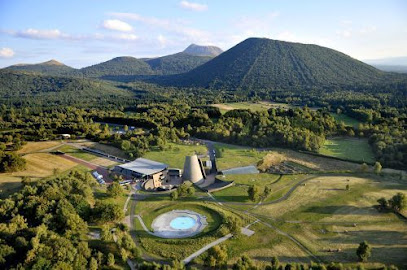
Murol Castle
Discover the enchanting Murol Castle in the heart of Auvergne, a historical gem with breathtaking views and rich medieval history.

Parc Naturel Régional Livradois-Forez
Explore the breathtaking landscapes and rich biodiversity of Parc Naturel Régional Livradois-Forez, a French natural park perfect for outdoor adventures.

Volcan de Lemptégy
Explore the stunning Volcan de Lemptégy in the heart of France's volcanic landscape, offering adventure and education for all ages.

Cave of the Volvic stone
Explore the breathtaking depths of the Cave of the Volvic Stone, a geological marvel showcasing stunning volcanic formations in the heart of France.

Rocher Saint-Michel d'Aiguilhe
Discover the breathtaking beauty and rich history of Rocher Saint-Michel d'Aiguilhe, a stunning chapel perched atop a volcanic rock in Aiguilhe.

Parc Montjuzet
Explore the tranquil beauty of Parc Montjuzet, an urban park in Clermont-Ferrand with stunning views and serene walking paths.

Temple of Mercury
Explore the Temple of Mercury in Orcines, a captivating archaeological site revealing the grandeur of ancient Roman civilization surrounded by stunning landscapes.

Puy de Sancy
Explore the breathtaking heights of Puy de Sancy, the highest volcano in the Massif Central, offering stunning views and thrilling outdoor activities.

Puy de Dôme
Discover the breathtaking Puy de Dôme, a dormant volcano in France's Auvergne region, offering stunning views and rich geological history.

Puy Pariou
Discover the breathtaking views of Puy Pariou, a dormant volcano in Auvergne, perfect for hiking and immersing in nature's beauty.

Space Volvic Information
Explore the stunning volcanic landscape and learn about the journey of Volvic spring water at Space Volvic, a captivating tourist attraction in France.

Source du Par
Explore the enchanting Source du Par in Chaudes-Aigues, where natural hot springs and stunning landscapes create a perfect getaway for relaxation.

Essential places to dine
Volcan de Lemptégy
Explore Volcan de Lemptégy: A unique blend of adventure and education in Auvergne's stunning volcanic landscapes.

Buron du Col de la Croix Morand
Discover authentic French cuisine at Buron du Col de la Croix Morand, where stunning landscapes meet culinary excellence in Chambon-sur-Lac.

Puy de Dôme
Explore Puy de Dôme: A breathtaking dormant volcano in France's Auvergne region known for stunning views and rich biodiversity.

L'Arbalète
Discover authentic French flavors at L'Arbalète in Murol - where culinary artistry meets local charm.

Auberge le Cantou
Discover the essence of French cuisine at Auberge le Cantou in Orcival - where tradition meets taste amidst stunning landscapes.

Le Village Auvergnat
Discover authentic French cuisine at Le Village Auvergnat in Orcines – a must-visit destination for food lovers exploring France's culinary delights.

Archipel Volcans
Experience comfort and exquisite French cuisine at Archipel Volcans in Saint-Gènes-Champanelle - your gateway to nature's beauty.
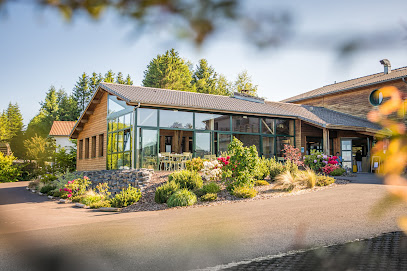
Auberge de La Cabane
Experience authentic French cuisine at Auberge de La Cabane in Saint-Alyre-ès-Montagne - where tradition meets taste.

Le Relais des Puys, Logis
Experience authentic French hospitality at Le Relais des Puys in Orcines—your perfect blend of comfort and exquisite dining awaits.

Hôtel Restaurant Origines par Adrien Descouls
Discover exquisite Haute French cuisine at Hôtel Restaurant Origines in Le Broc – where culinary artistry meets exceptional hospitality.
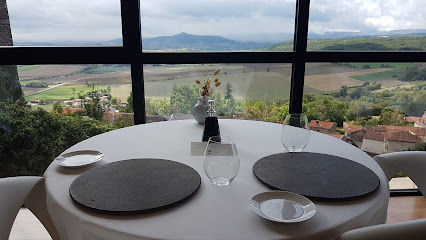
Auberge du Bougnat
Experience authentic French cuisine at Auberge du Bougnat in scenic Saint-Victor-la-Rivière - a culinary treasure worth discovering.

la ferme de chadet
Experience authentic French cuisine at La Ferme de Chadet in Prondines, where local flavors meet warm hospitality.

Hôtel Restaurant Volcan Sancy
Discover comfort and exceptional cuisine at Hôtel Restaurant Volcan Sancy in scenic Nébouzat, surrounded by stunning volcanic landscapes.

Lac Des Graves
Experience nature's tranquility at Lac Des Graves—perfect for fishing, hiking, and enjoying local cuisine amidst stunning landscapes.

Les Volca'lodges de Tournebise
Discover tranquility at Les Volca'lodges de Tournebise - your perfect retreat in the heart of Auvergne's stunning volcanic landscape.

Markets, malls and hidden boutiques
Parc naturel régional des Volcans d'Auvergne
Explore the captivating beauty of Parc Naturel Régional des Volcans d'Auvergne, where volcanic landscapes meet rich biodiversity in a paradise for nature lovers.

Volcan de Lemptégy
Explore the thrilling Volcan de Lemptégy, a unique blend of adventure and education in the stunning Auvergne region of France.
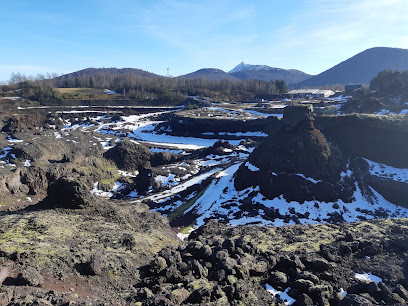
La Galerie Nacarat
Explore La Galerie Nacarat in Clermont-Ferrand: A shopping paradise filled with boutiques, eateries, and entertainment for every traveler.
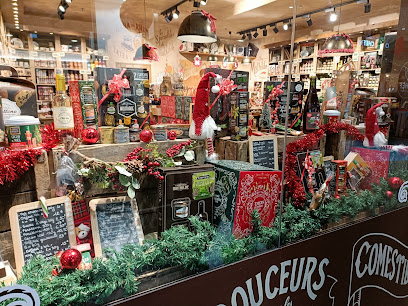
Galeries Lafayette Clermont
Discover the ultimate shopping destination in Clermont-Ferrand with Galeries Lafayette, offering luxury fashion, beauty, and lifestyle products all in one place.

Clermont Auvergne Volcanoes Office De Clermont-Ferrand
Discover the Clermont Auvergne Volcanoes Office, your gateway to exploring breathtaking volcanic landscapes and rich cultural heritage in the heart of Auvergne.

VOLCANIC CYCLES
Experience the beauty of Enval with Volcanic Cycles, your go-to bicycle store for thrilling biking adventures in France's stunning landscapes.

Les Volcans
Explore Les Volcans in La Bourboule for unique local gifts that capture the essence of the Auvergne region's culture and craftsmanship.

Boutique Auvergne à Vulcania
Explore Boutique Auvergne at Vulcania for unique gifts and souvenirs celebrating the rich culture of the Auvergne region.

Lac Et Volcan (Sarl)
Explore Mont-Dore's chic clothing haven at Lac Et Volcan, where style meets comfort in the heart of the French Alps.

Boutiques du puy de Dôme
Discover authentic local treasures at the Boutiques du Puy de Dôme, your perfect stop for unique gifts and regional specialties in Orcines.

lac et volcan concept store
Explore the Lac et Volcan Concept Store in La Bourboule for unique, handcrafted treasures that embody the spirit of the Auvergne region.
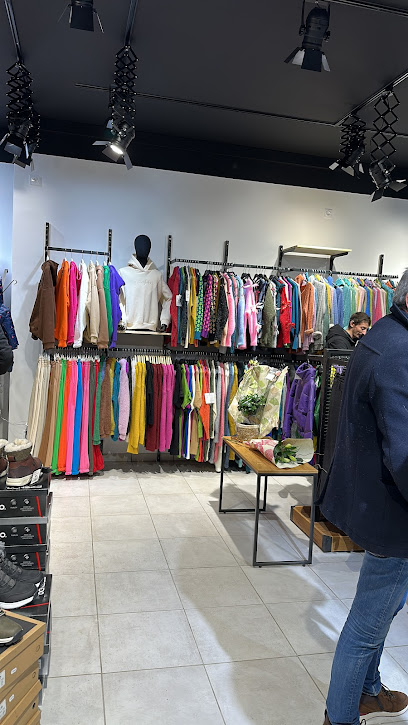
Local Phrases about Auvergne Volcanoes
-
- HelloSalut
[sa-lyu] - GoodbyeAu revoir
[o ruh-vwar] - YesOui
[wee] - NoNon
[noh] - Please/You're welcomeS'il vous plaît/De rien
[seel voo pleh/duh ryen] - Thank youMerci
[mair-see] - Excuse me/SorryExcusez-moi/Désolé
[ex-kyu-zay mwa/day-zo-lay] - How are you?Comment ça va?
[koh-mon sa vah] - Fine. And you?Bien. Et toi?
[byen. ay twa] - Do you speak English?Parlez-vous anglais?
[par-lay voo ahn-glai] - I don't understandJe ne comprends pas
[zhuh nuh kohm-prahnd pah]
- HelloSalut
-
- I'd like to see the menu, pleaseJe voudrais voir le menu, s'il vous plaît
[zhuh voo-dray vwahr luh muh-nyu, seel voo pleh] - I don't eat meatJe ne mange pas de viande
[zhuh nuh mahnj pah duh vyand] - Cheers!Santé!
[san-tay] - I would like to pay, pleaseJe voudrais payer, s'il vous plaît
[zhuh voo-dray pay-ay, seel voo pleh]
- I'd like to see the menu, pleaseJe voudrais voir le menu, s'il vous plaît
-
- Help!Au secours!
[o seh-coor] - Go away!Va-t'en!
[va-tan] - Call the Police!Appelez la police!
[ah-peh-lay lah poh-lees] - Call a doctor!Appelez un médecin!
[ah-peh-lay uh may-duh-sanh] - I'm lostJe suis perdu
[zhuh swee pair-doo] - I'm illJe suis malade
[zhuh swee mah-lahd]
- Help!Au secours!
-
- I'd like to buy...Je voudrais acheter...
[zhuh voo-dray ash-tay...] - I'm just lookingJe regarde juste
[zhuh ruh-gard zhust] - How much is it?Combien ça coûte?
[kohm-byen sa koot] - That's too expensiveC'est trop cher
[say troh shair] - Can you lower the price?Pouvez-vous baisser le prix?
[poo-vay voo bay-say luh pree]
- I'd like to buy...Je voudrais acheter...
-
- What time is it?Quelle heure est-il?
[kel uhr ay-teel] - It's one o'clockIl est une heure
[eel ay oon uhr] - Half past (10)Dix et demie
[dees ay duh-mee] - MorningMatin
[mah-tan] - AfternoonAprès-midi
[ah-pray-mee-dee] - EveningSoir
[swahr] - YesterdayHier
[yehr] - TodayAujourd'hui
[oh-zhoor-dwee] - TomorrowDemain
[duh-mahn] - 1Un
[uhn] - 2Deux
[duh] - 3Trois
[twah] - 4Quatre
[kat] - 5Cinq
[sank] - 6Six
[sees] - 7Sept
[set] - 8Huit
[weet] - 9Neuf
[nuf] - 10Dix
[dees]
- What time is it?Quelle heure est-il?
-
- Where's a/the...?Où est le/la...?
[oo ay luh/lah] - What's the address?Quelle est l'adresse?
[kel ay lah-dress] - Can you show me (on the map)?Pouvez-vous me montrer (sur la carte)?
[poo-vay voo muh mon-tray (soor lah kart)] - When's the next (bus)?Quand est le prochain (bus)?
[kand ay luh proh-shan (boos)] - A ticket (to ....)Un billet (pour ....)
[uhn bee-yay (poor)]
- Where's a/the...?Où est le/la...?
History of Auvergne Volcanoes
-
The Auvergne Volcanoes, located in the Massif Central region of France, began forming around 70 million years ago during the late Cretaceous period. The region is characterized by a series of volcanic cones, craters, and lava domes, which are the result of multiple volcanic eruptions over millions of years. The volcanic activity in the region was most intense between 10,000 and 7,000 years ago, creating the picturesque landscape seen today.
-
Before the Roman conquest, the Auvergne region was inhabited by the Arverni, a powerful Gallic tribe. The region's volcanic terrain provided natural fortifications for their settlements. The famous Gallic chieftain Vercingetorix, who led the Gallic resistance against Julius Caesar, was born in this region. After the Roman conquest, the area was incorporated into the Roman province of Aquitania, and towns such as Augustonemetum (modern-day Clermont-Ferrand) flourished.
-
During the medieval period, the Auvergne region saw the construction of numerous fortified castles and religious establishments. The volcanic rocks were utilized for building robust structures. Notable castles include Château de Tournoël and Château de Murol, both strategically located atop volcanic hills. The region was also dotted with Romanesque churches and abbeys, highlighting its religious significance during this era.
-
The Renaissance period brought about significant agricultural advancements in the Auvergne region. The fertile volcanic soil proved ideal for farming and viticulture. The region became known for its high-quality cheese, particularly Saint-Nectaire, and its vineyards. This period also saw the construction of elegant châteaux, blending medieval fortifications with Renaissance architectural styles.
-
The 19th century marked a period of industrialization in the Auvergne region. The natural resources, particularly volcanic stone, were exploited for construction and industrial purposes. Clermont-Ferrand became an industrial hub, known for its rubber and tire manufacturing, most famously as the home of Michelin. The development of railways also made the region more accessible, promoting tourism to the volcanic landscapes.
-
In 1977, the Parc Naturel Régional des Volcans d'Auvergne was established to protect the unique volcanic landscapes and promote sustainable tourism. Covering nearly 400,000 hectares, the park encompasses several volcanic massifs, including the Chaîne des Puys, which is a UNESCO World Heritage site. The park aims to preserve the natural environment, support local communities, and educate visitors about the region's geological and cultural heritage.
Auvergne Volcanoes Essentials
-
The Auvergne Volcanoes are located in central France, within the Auvergne-Rhône-Alpes region. The nearest major city is Clermont-Ferrand, which has an international airport (Clermont-Ferrand Auvergne Airport). Direct flights are available from several European cities. Alternatively, you can reach Clermont-Ferrand by train from Paris, which takes approximately 3.5 hours. If you prefer driving, the region is well-connected by highways.
-
Within the Auvergne region, renting a car is the most convenient way to explore the volcanoes and surrounding areas. Public transportation options include regional buses and trains, but they may not reach all the remote areas. Biking and hiking are popular for exploring the natural landscapes. Clermont-Ferrand also has a reliable public transport network, including buses and trams.
-
The official currency in France is the Euro (EUR). Credit cards are widely accepted in hotels, restaurants, and shops in Clermont-Ferrand and other larger towns. However, it's advisable to carry some cash, especially if you plan to visit smaller villages or rural areas where card payments may not be an option. ATMs are readily available in most towns.
-
The Auvergne region is generally safe for tourists. However, as with any travel destination, it is important to remain vigilant. Avoid leaving belongings unattended and be cautious in crowded areas. Clermont-Ferrand and other urban centers have low crime rates, but it's always best to stay aware of your surroundings, especially at night.
-
In case of emergency, dial 112, the European emergency number. The local police and medical services are efficient and accessible. Clermont-Ferrand has several hospitals and clinics. If you plan on hiking or engaging in outdoor activities, ensure you have a charged mobile phone and inform someone of your plans. Travel insurance covering medical emergencies is highly recommended.
-
Fashion: Do dress comfortably and in layers, as the weather can change rapidly. Avoid flashy clothing. Religion: Do respect local religious sites and traditions. Public Transport: Do validate your ticket before boarding trains or buses. Don't talk loudly on public transport. Greetings: Do greet people with a 'Bonjour' (Good day). Don't forget to say 'Merci' (Thank you). Eating & Drinking: Do try local specialties like 'truffade' and 'aligot'. Don't rush meals; dining is a leisurely activity in France.
-
To experience Auvergne Volcanoes like a local, visit the local markets in towns such as Issoire and Riom. Participate in local festivals like the Montferrand Medieval Festival. Engage with locals, as they are often proud of their heritage and happy to share insights. Don't miss hiking trails like the Puy de Dôme and Puy de Sancy for stunning views.
Nearby Cities to Auvergne Volcanoes
-
Things To Do in Lyon
-
Things To Do in Nîmes
-
Things To Do in Montpellier
-
Things To Do in Grenoble
-
Things To Do in Avignon
-
Things To Do in Toulouse
-
Things To Do in Annecy
-
Things To Do in Dijon
-
Things To Do in Tours
-
Things To Do in Geneva
-
Things To Do in Bordeaux
-
Things To Do in Aix-en-Provence
-
Things To Do in Lausanne
-
Things To Do in La Rochelle
-
Things To Do in Marseille












